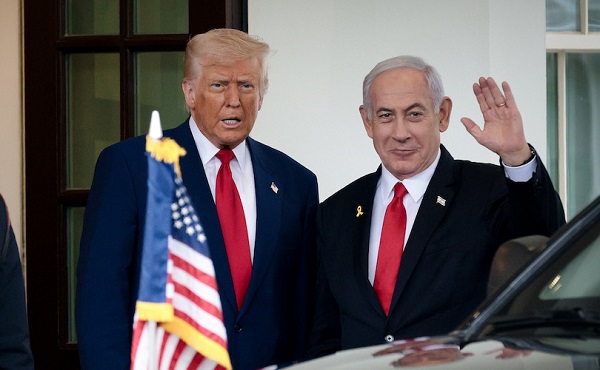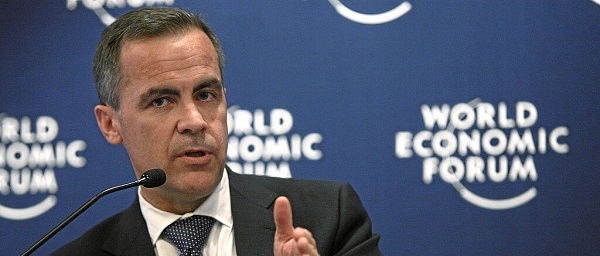Crime
Police say they’ve thwarted third assassination attempt: Man Arrested Near Trump Rally

From the Daily Caller News Foundation
By Hailey Gomez
Bianco stated that Riverside officers “probably did” prevent a third assassination attempt, the Secret Service Chief of Communications posted a joint statement with the FBI noting that the investigation is ongoing but that the former president “was not in any danger.”
Authorities arrested a Las Vegas resident Saturday at a checkpoint for former President Donald Trump’s rally in Coachella, California for allegedly possessing multiple illegal firearms, according to a press release.
Since the first assassination attempt against Trump on July 13 and the arrest of a second potential assassin on Sept. 15, the former president’s safety has been a top concern for lawmakers and the campaign. Riverside County Sheriff issued a statement announcing the arrest of 49-year-old Vem Miller who was found to be “illegally in possession of a shotgun, a loaded handgun, and a high-capacity magazine.”
Officials said Miller was arrested at 4:59 p.m. by deputies assigned to the rally at a checkpoint at Avenue 52 and Celebration Drive. Miller, driving a black SUV, was booked for “a loaded firearm” and “a high-capacity magazine,” according to the press release.
“This incident did not impact the safety of former President Trump or attendees of the event,” officials added.
Miller was confirmed to be released on $5,000 bail the same day and is scheduled to appear in court on January 2, 2025, according to the Riverside County Sheriff’s Department inmate database.
Riverside County Sheriff Chad Bianco held a press conference Sunday afternoon, stating Miller first approached the outer perimeter and gave “all indications that he belonged there, that he was a participant who was allowed to enter into VIP in the press corps.” However, as Miller progressed, officials discovered the 49-year-old was driving an unregistered vehicle with a homemade license plate “indicative of a group of citizens that claim to be sovereign citizens,” along with multiple passports and driver’s licenses.
“The interior of the vehicle was in disarray. The vehicle had an obviously fake license plate, which prompted further investigation,” Bianco said. “During that investigation the deputy found multiple passports with multiple names, multiple driving license[s] with different names.”
While Bianco stated that Riverside officers “probably did” prevent a third assassination attempt, the Secret Service Chief of Communications posted a joint statement with the FBI noting that the investigation is ongoing but that the former president “was not in any danger.”
“The U.S. Attorney’s Office, U.S. Secret Service, and FBI are aware of the Riverside County Sheriff’s Office’s arrest on Saturday. The U.S. Secret Service assesses that the incident did not impact protective operations and former President Donald Trump was not in any danger,” the statement read.
“While no federal arrest has been made at this time, the investigation is ongoing. The U.S. Attorney’s Office, U.S. Secret Service, and FBI extend their gratitude to the deputies and local partners who helped ensure the safety of last night’s events,” the statement concluded.
In mid-September, Florida officials arrested 58-year-old Ryan Wesley Routh after a Secret Service agent spotted him in the bushes at Trump International Golf Course West Palm Beach while the former president was playing the course. After firing shots at Routh, the 58-year-old fled, leaving behind an “AK-47 style rifle with a scope,” two backpacks, a GoPro and ceramic body armor plates, officials confirmed.
Routh was formally charged on Sept. 24 by federal prosecutors with attempting to assassinate a major political candidate, knowingly possessing a firearm and ammunition despite a previous conviction, possession of a firearm that had “the importer’s and manufacturer’s serial number removed, obliterated and altered,” and forcibly assaulting and interfering with a Secret Service special agent, according to court documents.
The arrest of Routh came after the July 13 assassination attempt against the former president by 20-year-old Thomas Matthew Crooks, who fired multiple rounds into Trump’s Butler, Pennsylvania, rally. The attack killed former volunteer fire chief Corey Comperatore, injured two supporters and injured Trump’s ear as well.
After his release, Miller reportedly denied the allegations, telling the Southern California News Group how he was “shocked” to have been arrested, noting he is a supporter of the former president, according to Fox News. Miller additionally claims that he was never told the reason behind his apprehension initially, and was allegedly only able to call a lawyer eight hours after his arrest, the outlet reported.
“These accusations are complete bullshit,” Miller said, according to Fox News. “I’m an artist, I’m the last person that would cause any violence and harm to anybody.”
Trump Campaign’s Communications Director Steven Cheung confirmed Sunday that the team was “monitoring the situation and gathering more information,” thanking law enforcement for their involvement.
“We thank law enforcement for securing the rally site and helping ensure the safety of President Trump. We are aware of news reports about the arrest and are currently monitoring the situation and gathering more information,” Cheung wrote.
Banks
Welcome Back, Wells Fargo!

 Racket News
Racket News
By Eric Salzman
The heavyweight champion of financial crime gets seemingly its millionth chance to show it’s reformed
The past two decades have been tough ones for Wells Fargo and the many victims of its sprawling crime wave. While the banking industry is full of scammers, Wells took turning time honored street-hustles into multi-billion dollar white-collar hustles to a new level.
The Federal Reserve announced last month that Wells Fargo is no longer subject to the asset growth restriction the Fed finally enforced in 2018 after multiple scandals. This was a major enforcement action that prohibited Wells from growing existing loan portfolios, purchasing other bank branches or entering into any new activities that would result in their asset base growing.
Upon hearing the news that Wells was being released from the Fed’s penalty box, my mind turned to this pivotal moment in the classic movie “Slapshot.”
Here are some of Wells Fargo’s lowlights both before and after the Fed’s enforcement action:
- December 2022: Wells Fargo paid more than $2 billion to consumers and $1.7 billion in civil penalties after the Consumer Financial Protection Bureau (CFPB) found mismanagement — including illegal fees and interest charges — in several of its biggest product lines, such as auto loans, mortgages, and deposit accounts.
- September 2021: Wells Fargo paid $72.6 million to the Justice Department for overcharging foreign exchange customers from 2010-2017.
- February 2020: Wells Fargo paid $3 billion to settle criminal and civil investigations by the Justice Department and SEC into its aggressive sales practices between 2002 and 2016. About $500 million was eventually distributed to investors.
- January 2020: The Office of the Comptroller of the Currency (OCC) banned two senior executives, former CEO John Stumpf and ex-Head of Community Bank Carrie Tolstedt, from the banking industry. Stumpf and Tolstedt also incurred civil penalties of $17.5 million and $17 million.
- August 2018: The Justice Department levied a $2.09 billion fine on Wells Fargo for its actions during the subprime mortgage crisis, particularly its mortgage lending practices between 2005 and 2007.
- April 2018: Federal regulators at the CFPB and OCC examined Wells’ auto loan insurance and mortgage lending practices and ordered the bank to pay $1 billion in damages.
- February 2018: The aforementioned Fed enforcement action. In addition to the asset growth restriction, Wells was ordered to replace three directors.
- October 2017: Wells Fargo admitted wrongdoing after 110,000 clients were fined for missing a mortgage payment deadline — delays for which the bank was ultimately deemed at fault.
- July 2017: As many as 570,000 Wells Fargo customers were wrongly charged for auto insurance on car loans after the bank failed to verify whether those customers already had existing insurance. As a result, up to 20,000 customers may have defaulted on car loans.
- September 2016: Wells Fargo acknowledged its employees had created 1.5 million deposit accounts and 565,000 credit card accounts between 2002 and 2016 that “may not have been authorized by consumers,” according to CFPB. As a result, the lender was forced to pay $185 million in damages to the CFPB, OCC, and City and County of Los Angeles.
Additionally, somehow in 2023 Wells even managed to drop $1 billion in a civil settlement with shareholders for overstating their progress in complying with their 2018 agreement with the Fed to clean themselves up!
I imagine if Wells were in any other business, it wouldn’t be allowed to continue. But Wells is part of the “Too Big to Fail” club. Taking away its federal banking charter would be too disruptive for the financial markets, so instead they got what ended up being a seven-year growth ban. Not exactly rough justice.
While not the biggest settlement, my favorite Wells scam was the 2021 settlement of the seven-year pilfering operation, ripping off corporate customers’ foreign exchange transactions.
Like many banks, Wells Fargo offers its corporate clients with global operations foreign exchange (FX) services. For example, if a company is based in the U.S. but has extensive dealings in Canada, it may receive payments in Canadian dollars (CAD) that need to be exchanged for U.S. dollars (USD) and vice versa. Wells, like many banks, has foreign exchange specialists who do these conversions. Ideally, the banks optimize their clients’ revenue and decrease risk, in return for a markup fee, or “spread.”
There’s a lot of trust involved with this activity as the corporate customers generally have little idea where FX is trading minute by minute, nor do they know what time of day the actual orders for FX transactions — commonly called “BSwifts” — come in. For an unscrupulous bank, it’s a license to steal, which is exactly what Wells did.
According to the complaint, Wells regularly marked up transactions at higher spreads than what was agreed upon. This was just one of the variety of naughty schemes Wells used to clobber their customers. My two favorites were “The Big Figure Trick” and the “BSwift Pinata.”
The Big Figure Trick
Let’s say a client needs to sell USD for CAD, and that the $1 USD is worth $1.32 CAD. In banking parlance, the 32 cents is called the “Big Figure.” Wells would buy the CAD at $1.32 for $1 USD and then transpose the actual exchange rate on the customer statement from $1.32 to $1.23. If the customer didn’t notice, Wells would pocket the difference. On a transaction where the client is buying 5 million CAD with USD, the ill-gotten gain for Wells would be about $277,000 USD!
Conversely, if the customer did notice the difference, Wells would just blame it on the grunts in its operational back office, saying they accidentally transposed the number and “correct” the transaction. From the complaint, here is some give and take between two Wells FX specialists:
“You can play the transposition error game if you get called out.” Another FX sales specialist noted to a colleague about a previous transaction that a customer “didn’t flinch at the big fig the other day. Want to take a bit more?”
The BSwift Piñata
The way this hustle would work is, let’s say the Wells corporate customer was receiving payment from one of their Canadian clients. The Canadian client’s bank would send a BSwift message to Wells. The Wells client was in the dark about the U.S. dollar-Canadian dollar exchange rate because it had no idea what time of day the message arrived. Wells took advantage of that by purchasing U.S. dollars for Canadian dollars first. For simplicity, think of the U.S. dollar-Canadian dollar exchange rate as a widget that Wells bought for $1. If the widget increased in value, say to $1.10 during the day, Wells would sell the widget they purchased for $1 to the client for $1.10 and pocket 10 cents. If the price of the widget Wells bought for $1 fell to 95 cents, Wells would just give up their $1 purchase to the client, plus whatever markup they agreed to.
Heads, Wells wins. Tails, client loses.
The complaint notes that a Wells FX specialist wrote that he:
“Bumped spreads up a pinch,” that “these clients who are in the mode of just processing wires will most likely not notice this slight change in pricing” and that it “could have a very quick positive impact on revenue without a lot of risk.”
Talk about a boiler room operation. Personally, I think calling what you are doing to a client a “piñata” should have easily put Wells in the Fed’s penalty box another 5 years at least!
Wells has been released from the Fed’s 2018 enforcement order. I would like to think they have learned their lesson and are reformed, but I would lay good odds against it. A leopard can’t change its spots.
Racket News is a reader-supported publication.
Consider becoming a free or paid subscriber.
Crime
Bryan Kohberger avoids death penalty in brutal killing of four Idaho students

Quick Hit:
Bryan Kohberger will plead guilty to murdering four Idaho college students, avoiding a death sentence but leaving victims’ families without answers. The plea deal means he’ll spend life in prison without ever explaining why he committed the brutal 2022 killings.
Key Details:
- Kohberger will plead guilty at a hearing scheduled for Wednesday at 11 a.m. local time.
- The plea deal removes the possibility of death by firing squad but ensures life in prison without parole.
- Victims’ families say the state “failed” them by agreeing to a deal that denies them an explanation for the murders.
Diving Deeper:
Bryan Kohberger, a former PhD criminology student at Washington State University, is expected to plead guilty to the November 2022 murders of four University of Idaho students, sparing himself the death penalty but also avoiding any explanation for his motive. Idaho defense attorney Edwina Elcox told the New York Post that under the plea, Kohberger will have to admit to the killings but won’t have to provide a reason for his actions. “There is no requirement that he says why for a plea,” Elcox explained.
Prosecutors reached the plea deal just weeks before the scheduled trial, which many believed would have revealed the full details and motives behind the shocking quadruple homicide. Kohberger is accused of murdering Kaylee Goncalves, 21; Madison Mogen, 21; Ethan Chapin, 20; and Xana Kernodle, 20, with a military-style Ka-Bar knife as they slept in their off-campus home in Moscow, Idaho. His DNA was allegedly found on a knife sheath left at the scene.
The Goncalves family blasted the state for the deal, saying, “They have failed us.” They had hoped a trial would uncover why Kohberger targeted their daughter and her friends. Prosecutors, however, argued that the plea ensures a guaranteed conviction and prevents the years of appeals that typically follow a death sentence, providing a sense of finality and keeping Kohberger out of the community forever.
Sentencing will not take place for several weeks following Wednesday’s hearing, which is expected to last about an hour as the judge confirms the plea agreement is executed properly. While the families may find some closure in knowing Kohberger will never be free again, they are left without the one thing a trial could have provided: answers.
(AP Photo/Matt Rourke, Pool)
-

 International2 days ago
International2 days agoCBS settles with Trump over doctored 60 Minutes Harris interview
-

 Business2 days ago
Business2 days agoWhy it’s time to repeal the oil tanker ban on B.C.’s north coast
-

 Crime1 day ago
Crime1 day agoBryan Kohberger avoids death penalty in brutal killing of four Idaho students
-

 Energy2 days ago
Energy2 days agoIf Canada Wants to be the World’s Energy Partner, We Need to Act Like It
-

 Alberta2 days ago
Alberta2 days agoPierre Poilievre – Per Capita, Hardisty, Alberta Is the Most Important Little Town In Canada
-

 MxM News2 days ago
MxM News2 days agoUPenn strips Lia Thomas of women’s swimming titles after Title IX investigation
-

 Business2 days ago
Business2 days agoLatest shakedown attempt by Canada Post underscores need for privatization
-

 COVID-191 day ago
COVID-191 day agoTop COVID doctor given one of Canada’s highest honors








